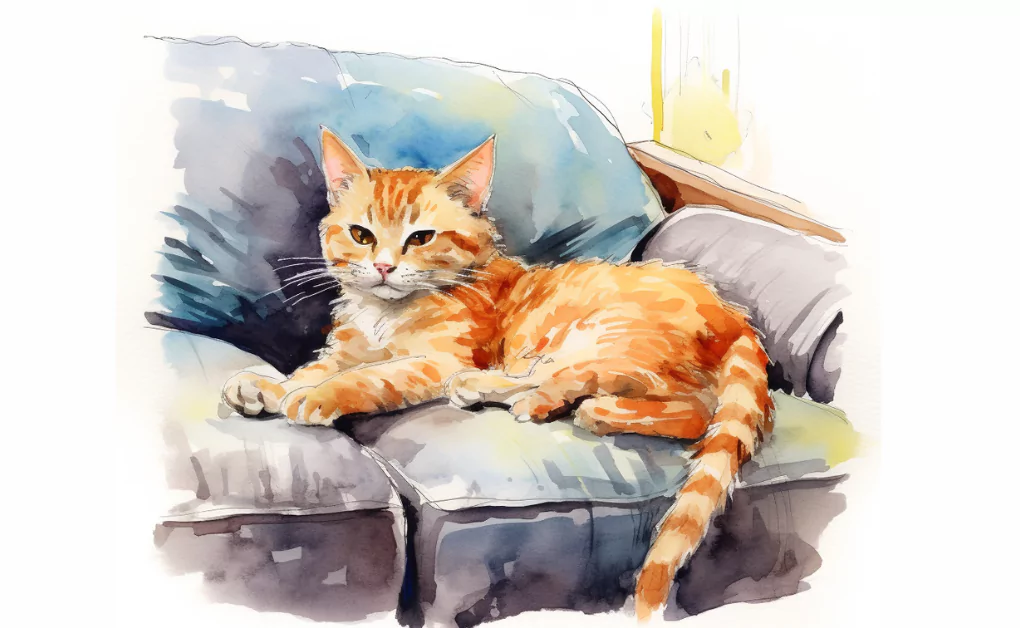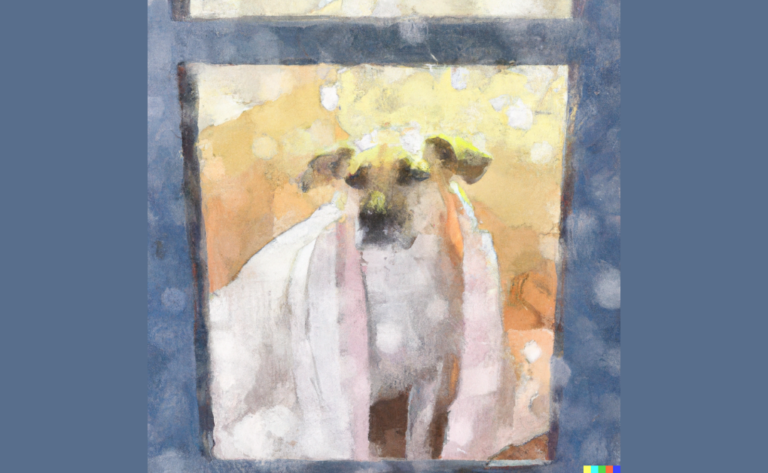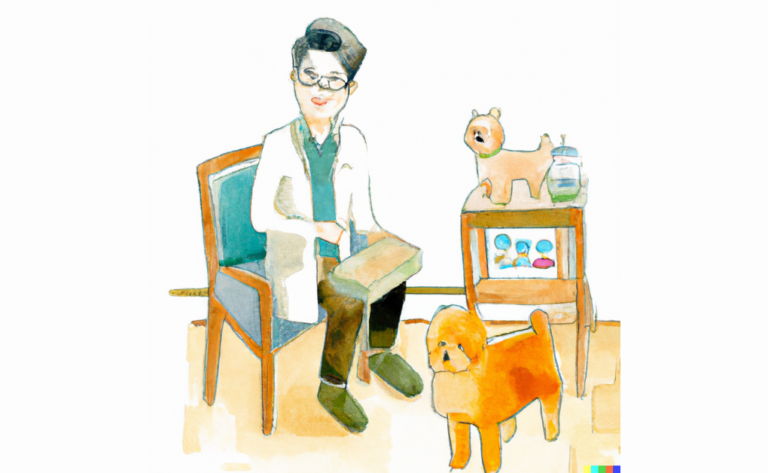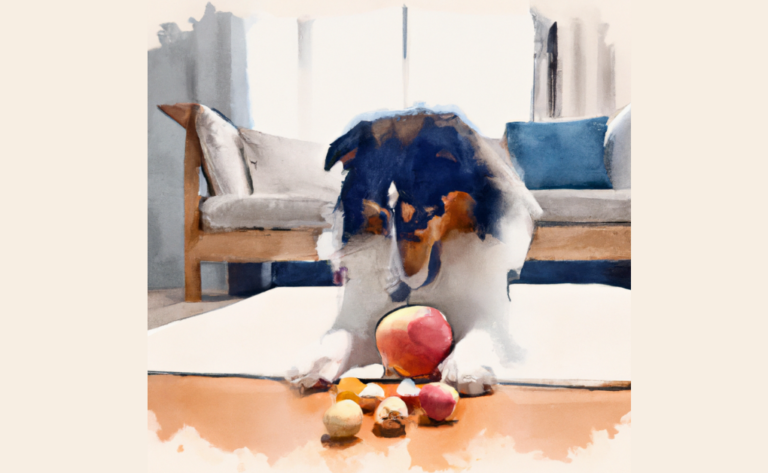11 Strange Cat Behaviors Finally Explained
Introduction
When Sarah adopted her first cat, Whiskers, she was prepared for a life of purring, cuddles, and playtime. What she didn’t expect was the bizarre range of behaviors that left her scratching her head in puzzlement. From chattering at birds to knocking items off the table, Whiskers seemed to have a quirk for every occasion. Determined to understand her feline companion better, Sarah dove headfirst into the world of cat behavior.
Your cat seems to do some weird and strange things sometimes. From eating his toys to jumping up on people, it doesn’t always make sense why cats act the way they do. But, according to experts, many of these behaviors have a purpose. So here are some cat behaviors that seem totally out of nowhere but aren’t.
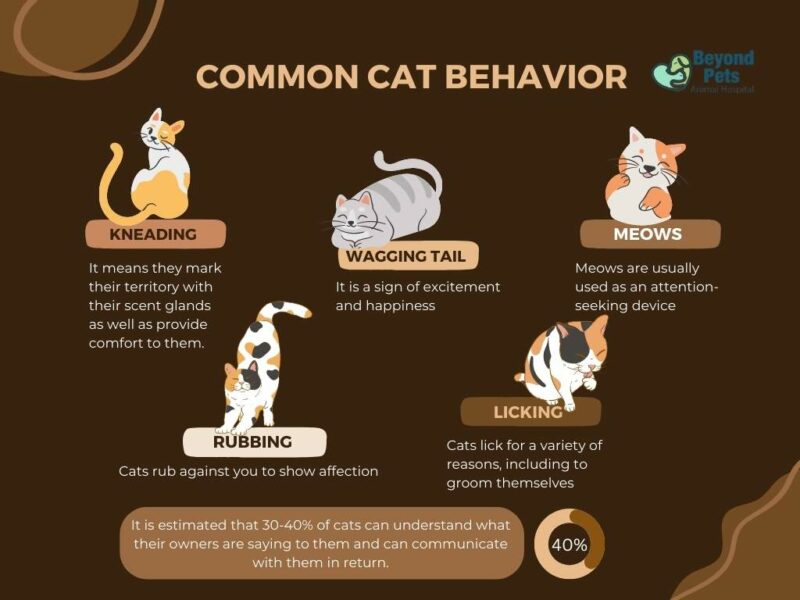
1. Face Rubbing
Cats are known for being very affectionate animals. They like to cuddle up close to you and purr while sleeping. If you pet a cat’s head, it’ll usually respond with a face rub. This is a friendly gesture where a cat gently licks the side of your hand with his tongue. It means saying, “I’m happy I found you.
If you want to know how much a cat loves you, hold one of your fingers toward her nose. She’ll stick her paw over it and start licking away. If she keeps doing it, she’s telling you she likes you.
2. Head Butting Or Bunting
Cats sometimes head butt or bunt their owners and other cats for various reasons. Most times, it’s just a sign of affection. The cat is trying to show their owner that they love them by rubbing its face against them and transferring some of its scents. However, this behavior can also be a way to get attention from you as your cat craves a connection with you.
Another reason cats might head butt is that they are marking their territory by rubbing some of their scents onto the person or object they are butting against. Your cat is telling everyone else, “This belongs to me!” And lastly, cats are natural hunters and may even use headbutts to stimulate their prey before pouncing on it!
3. The Sudden Nip/Bite
The sudden nip or bite can be alarming, especially if your cat is friendly. But it’s something that cats sometimes do. It usually happens when they become over-excited or feel threatened.
Cats use bites as a way to communicate with us. For example, some cats give warning bites because they want us to stop petting them before they become too overwhelmed or overstimulated. If the warning bite doesn’t work, the cat might give a stronger bite to indicate their displeasure or discomfort.
If you notice your cat giving biting behavior, it’s essential to try and understand why they’re feeling stressed and react appropriately. Give them space to calm down, and don’t punish them, as this can worsen their agitation. Offer treats or toys for positive reinforcement of more desirable behaviors instead!
4. Tail Twitching
Cat tail twitching is a genuine mystery that can leave many owners puzzled. It’s best to think of the tail twitch as a mini-sub communication, similar to body language.
When cats with slow-twitch, their tails may indicate various emotions, including pleasure or playfulness. Twitching the tail implies that your cat is actively engaging in something, like scanning her environment or trying to concentrate on something.
Twitching also suggests excitement or alertness among cats and could be an attempt at communication with other cats. This type of behavior typically indicates friendly feelings. If your cat twitches more than usual, it may imply she’s scared or threatened by something in her environment and needs help from you for protection.
5. Kneading
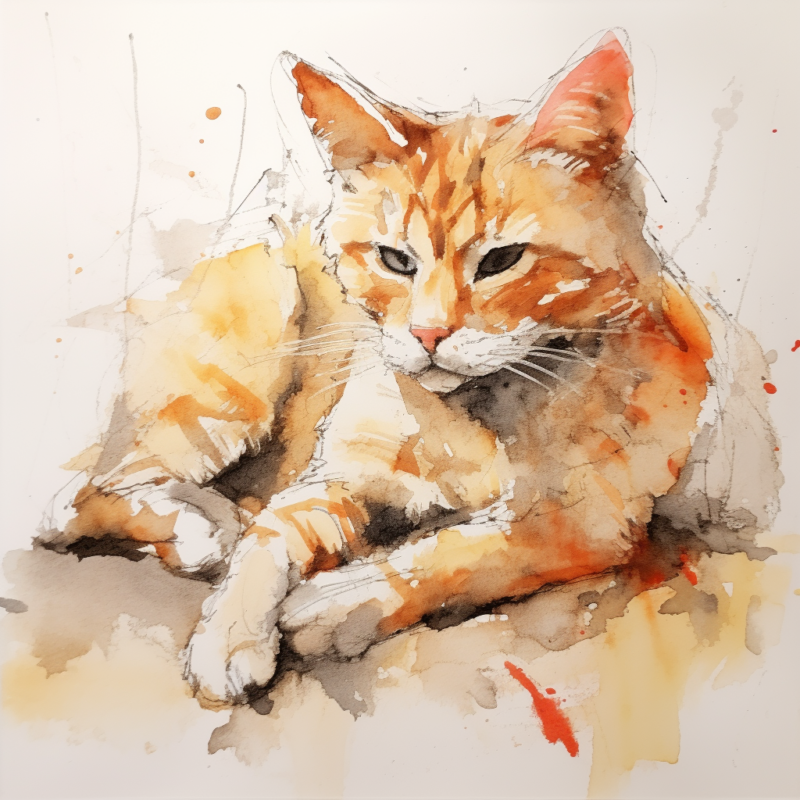
One of the oddest behaviors cats exhibit is kneading. Cats usually press their paws, alternating between left and right, against a soft object (like a pillow or your lap). Sometimes it’s even accompanied by purring.
So why do cats do this? It’s even weirder when you consider that felines are born without the skill to knead but somehow gain it over time. The answer can be found in kittenhood: Kneading is triggered when cats recall nursing from their mother as newborns. During suckling, mama cats kneaded their bellies to stimulate milk production – and their kittens picked up on the behavior.
Nowadays, kneading still occurs, with some adult cats showing contentment. It may indicate:
- they recognize something as an accepted part of their environment
- whether that be you or a particular spot they sleep in
- and thus feel safe enough to express themselves through kneading.
6. Purring
Purring is a behavior with some mysterious qualities, but one thing we do know for sure is that cats purr when they are content or happy.
Cats have been documented purring when receiving attention from their owners and even when undergoing veterinary examination. In addition, cats have been known to purr before the onset of labor and delivery of their kittens, as if in anticipation!
It’s still a mystery how cats can produce this soft rumbling noise. Vibrations create the sound in the cat’s larynx, and the frequency coincides with the rate our heart pumps blood through our bodies. So it’s almost like an internal massage!
So why do cats purr? Scientists believe that it could serve to comfort cats, both physically and emotionally. Purring has also been shown to boost bone growth and healing thanks to its vibratory properties, which could explain why cats often emit a vibration before giving birth or after an injury.
However, some cats purr when scared, stressed, or in pain. If you are looking for a way to calm down your feline friend, try giving him a treat like a piece of cheese or a small toy. This will make him feel better. Cats love treats and toys. They are curious creatures and want to know what is happening around them.
7. Opening Its Mouth and Staring
Have you ever seen a cat quietly staring at something with its mouth wide open? It may seem strange, but cats do this for several reasons.
- They indulge in an instinctual behavior known as the Flehmen response. An exaggerated inhalation through the open mouth enables them to analyze smells better; cats use it to detect if food or danger lies ahead.
- Some cats stare at objects or animals because they are experiencing intense curiosity or excitement; however, it can also be interpreted as apprehension or caution.
- When cats stare like this for long periods and suddenly dart away quickly, it’s usually because they track a bug or some other small animal movement. However, when they focus on something intensely and exhaust the prey drive associated with hunting, the cat will often take off in pursuit when its prey makes a sudden move.
- Sometimes cats stare into ambivalent nothingness; experts believe that this means your kitty is simply relaxed or contented (in a trance-like state). In any case, backed by science and instincts – don’t be too flustered next time your kitty stares intently past you!
8. Sitting In Boxes
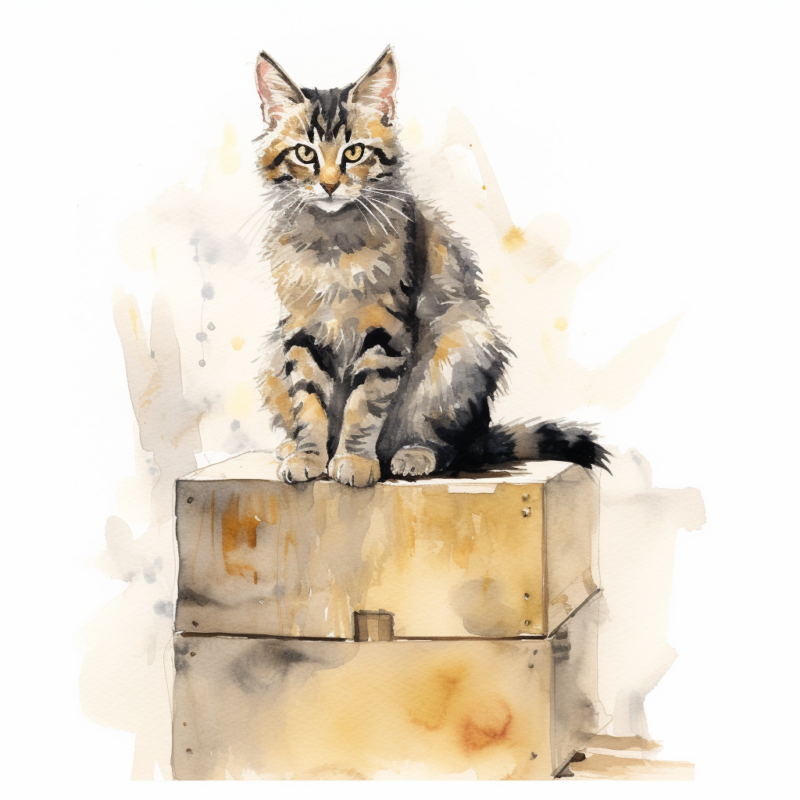
Cats like to hide in boxes because it gives them some privacy. They are less likely to make noise, and they feel safe. They also enjoy being able to see everything around them.
A cat will try to find the best hiding spot within a box. This might include sitting on the lid, under the bedding, or even sleeping in the middle of the pack.
If you put a box out in your yard, cats will use it as a shelter. However, they won’t spend much time there unless they want to go outside. If you keep the box clean, they will use it regularly.
9. Sleeping in a Cat Loaf Position
Cats don’t sleep, but they do rest. And while they might look like they’re sleeping, a lot is happening inside their heads. So we’ve got some science about what happens when cats enter this “loaf” position.
The cat’s body temperature drops to around 98 degrees Fahrenheit and it becomes very relaxed. As a result, their heart rate slows down considerably, and their breathing stops altogether. Many cats will stop breathing entirely during this state.
But when cats enter the loaf position, they aren’t just resting; they’re thinking.
If you watch a cat closely, you’ll notice that sometimes they start moving its head up and down, slowly lifting off the floor. Then they roll over onto one side, and finally, they flip themselves upside down.
This weird cat behavior is known as “pacing.” Cats pace because they’re trying to regulate their body temperature. They’ll move around if they’re too hot; if they’re too cold, they’ll lie still.
So how does a cat know whether he’s too warm or too cool? He uses his whiskers.
When a cat moves his face close to something, he feels the airflow across his skin. His whiskers pick up tiny changes in air pressure, and those little fluctuations tell him exactly where the air is coming from.
10. Bury Their Food
Cats will also bury their food to mark their territory – scent marking is essential in establishing boundaries for cats in the wild and their homes. The smell warns that this area is already occupied, protecting the cat’s food stores from intrusive competitors. Along with burying their food, cats may practice scratching the area to exhume more of their scent from glands between their toes and around its head. This helps solidify the message that this is the cat’s turf, and whatever was buried there belongs solely to them.
Cats may also instinctively bury their food due to innate instinctual behaviors passed down from mother kittens taught by mama cats who wanted to keep track of all her kits’ meals and ensure each one had taken care of themselves properly. In turn, these kittens adopted many similar behaviors that got passed down genetically over generations. This can explain why so many pet cats still participate in these activities today!
11. Howling At Night
Cats are nocturnal creatures. This means they are most active during the night. So what does it mean when you hear your kitty howl at midnight? Is he trying to tell you something? Or is he just being silly? Some things can cause your cat to start making noises, like a dog at night. So here are the main reasons your cat might be howling at the moon.
- He’s hungry. If your cat starts howling at midnight, chances are he’s hungry. So make you feed him every three hours throughout the evening and give him his favorite food. You can find out precisely what food he likes by following our guide to providing your feline friend.
- He wants attention. If your cat keeps howling at midnight, he probably wants someone to pay attention to him. Try giving him extra cuddles and kisses in the middle of the night.
- He’s lonely. Your cat may start howling at midnight because he misses his human family members. Give him lots of attention and try to spend quality time with him whenever possible.
- He’s scared. Sometimes, cats don’t want to go outside. Instead, they choose to hide inside the house. They often make noise to alert us to their presence when they do this.
- He’s stressed. Your cat could be feeling anxious about something. Maybe he’s afraid of thunderstorms or fireworks. Whatever the reason, he needs to feel safe and secure.
- He’s excited. Some cats are naturally very energetic and playful. They love playing games such as chasing toys or wrestling. These types of activities usually keep them busy and entertained at night.
Frequently Asked Questions
Disclaimer: The information provided on this veterinary website is intended for general educational purposes only and should not be considered as a substitute for professional veterinary advice, diagnosis, or treatment. Always consult a licensed veterinarian for any concerns or questions regarding the health and well-being of your pet. This website does not claim to cover every possible situation or provide exhaustive knowledge on the subjects presented. The owners and contributors of this website are not responsible for any harm or loss that may result from the use or misuse of the information provided herein.

